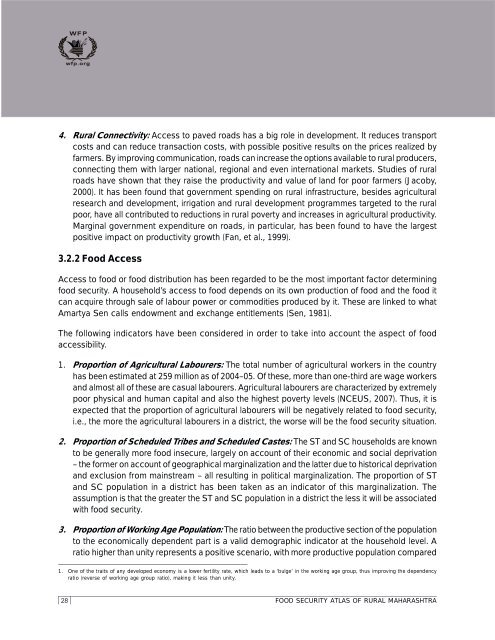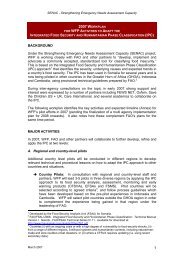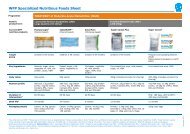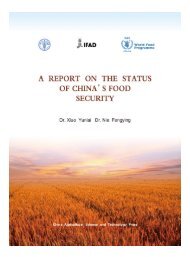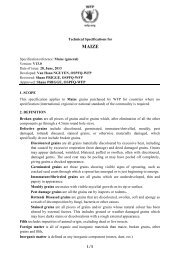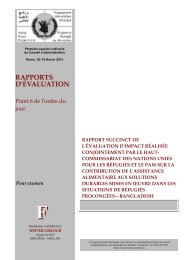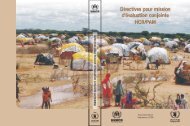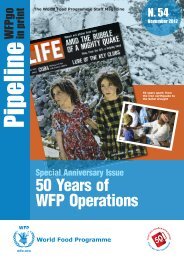Food Security Atlas Of RURAL MAHARASHTRA - WFP Remote ...
Food Security Atlas Of RURAL MAHARASHTRA - WFP Remote ...
Food Security Atlas Of RURAL MAHARASHTRA - WFP Remote ...
You also want an ePaper? Increase the reach of your titles
YUMPU automatically turns print PDFs into web optimized ePapers that Google loves.
4. Rural Connectivity: Access to paved roads has a big role in development. It reduces transportcosts and can reduce transaction costs, with possible positive results on the prices realized byfarmers. By improving communication, roads can increase the options available to rural producers,connecting them with larger national, regional and even international markets. Studies of ruralroads have shown that they raise the productivity and value of land for poor farmers (Jacoby,2000). It has been found that government spending on rural infrastructure, besides agriculturalresearch and development, irrigation and rural development programmes targeted to the ruralpoor, have all contributed to reductions in rural poverty and increases in agricultural productivity.Marginal government expenditure on roads, in particular, has been found to have the largestpositive impact on productivity growth (Fan, et al., 1999).3.2.2 <strong>Food</strong> AccessAccess to food or food distribution has been regarded to be the most important factor determiningfood security. A household’s access to food depends on its own production of food and the food itcan acquire through sale of labour power or commodities produced by it. These are linked to whatAmartya Sen calls endowment and exchange entitlements (Sen, 1981).The following indicators have been considered in order to take into account the aspect of foodaccessibility.1. Proportion of Agricultural Labourers: The total number of agricultural workers in the countryhas been estimated at 259 million as of 2004–05. <strong>Of</strong> these, more than one-third are wage workersand almost all of these are casual labourers. Agricultural labourers are characterized by extremelypoor physical and human capital and also the highest poverty levels (NCEUS, 2007). Thus, it isexpected that the proportion of agricultural labourers will be negatively related to food security,i.e., the more the agricultural labourers in a district, the worse will be the food security situation.2. Proportion of Scheduled Tribes and Scheduled Castes: The ST and SC households are knownto be generally more food insecure, largely on account of their economic and social deprivation– the former on account of geographical marginalization and the latter due to historical deprivationand exclusion from mainstream – all resulting in political marginalization. The proportion of STand SC population in a district has been taken as an indicator of this marginalization. Theassumption is that the greater the ST and SC population in a district the less it will be associatedwith food security.3. Proportion of Working Age Population: The ratio between the productive section of the populationto the economically dependent part is a valid demographic indicator at the household level. Aratio higher than unity represents a positive scenario, with more productive population compared1. One of the traits of any developed economy is a lower fertility rate, which leads to a ‘bulge’ in the working age group, thus improving the dependencyratio (reverse of working age group ratio), making it less than unity.28 FOOD SECURITY ATLAS OF <strong>RURAL</strong> <strong>MAHARASHTRA</strong>


